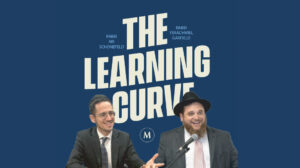By the Book
| May 29, 2017
We Jews are known as the People of the Book. The “Book” we’re best known for is the one we were gifted at Har Sinai the Torah. While collectors of antiques enjoy many types of collections many frum collectors have unsurprisingly built seforim collections. From handwritten papyrus scrolls to “silk” paper to modern printing there’s quite a collection of written material to help keep our mesorah intact.
High Prices High Demand
Chances are that at least one room in your home is lined with shelves of seforim. But years ago people’s homes were smaller money was scarce and seforim weren’t as easily available. The average Jew owned a siddur a Tehillim and perhaps a set of Chumashim but most seforim remained either in the beis medrash or in the rav’s home.
In comparison to secular books however seforim were printed in abundance (though the numbers don’t come anywhere near to what is printed today). “Our survival is based on Torah ” Nechemia an antique seforim dealer in Canada explains. “Most of the general population was illiterate but reading was an essential part of being a frum Jew. Therefore we took advantage of the printing presses to spread Torah knowledge.”
Today the value of those seforim is based on many factors including rarity age condition printing house and previous ownership. And of course as the rule in any marketplace is dictated by supply and demand it’s also true in the world of antique seforim.
Rabbi Yehuda Klitnick owner of Seforim World a store that sells out-of-print seforim and rabbinical manuscripts elaborates: “A collection of letters or a manuscript just several decades old can sell for several thousand dollars while a sefer of several hundred years old will often be sold for just a few hundred dollars. The difference is in what people want and how available that is.”
He also explains that a sefer that belonged to a gadol has special chashivus; the tzaddik’s nefesh goes into what he writes and what he learns from, and that makes it valuable. One handwritten page of the Chasam Sofer’s chiddushim, for example, can be sold for over $20,000. Some people frame it and keep it as a segulah for shemirah in their homes.
It is said of the Chofetz Chaim that he only used seforim printed in the Zhitomir or Slavita printing presses, both owned by descendants of Rav Pinchas of Koritz, whose owners used to immerse their printing plates in the mikveh before using them to print seforim. Today, these seforim are sold at high prices due to their history.
Building a Collection
When someone decides to start an antique seforim collection, they need to put a lot of thought into where their interests lie.
“I know people who are very fond of Tehillim,” Meron Eren, owner of Kedem Auction House in Jerusalem says. “They’ll buy one sefer Tehillim and then another one, and another one, and then decide that they want a collection of sifrei Tehillim. Haggados, of which there are thousands, are another popular collectors’ item.”
While you may think that looking in only one direction is limiting, it’s not true. When too many options are open, people don’t know what to buy. But if they’re focusing on one specific area, their dealers can look for good pieces, and if they attend an auction they won’t feel overwhelmed by too many choices.
Nechemia says he speaks to people for a long time before they start their collection, to help them identify what type of collection they want.
Some people are particularly interested in seforim that belonged to, or were authored by, tzaddikim who lived in the same region as their ancestors, or seforim based on their current affiliation (such as chassidish, litvish, Sefardi, Ashkenazi, etc.).
Another category in collections is based on the printing press. As mentioned above, many people are attracted to seforim from the Slavita and Zhitomir presses (both owned by the same family), while others enjoy pieces from Italian printing houses, renowned for their uniquely beautiful print.
Some people buy antique seforim simply for investment. “We’ve seen prices triple in just a few years,” Eren says. “Though it’s hard to predict what will sell well, there are trends and patterns as precedents, and we advise people who buy for the sole sake of investment.”
Where We Find Them
Only seforim already in existence can be called antique; there is no way to manufacture old seforim. But with collectors continuously buying seforim, does the well ever dry up?
Not at all, say the experts. Many large libraries and universities catalog and archive seforim, after which they no longer want to hold on to the originals. Other times, children of deceased parents sell their parent’s library for lack of space or interest. Rabbi Klitnick says he’s even had non-Jews calling him after finding a collection of seforim in their attics (apparently left by previous homeowners).
“We always have surprises,” Rabbi Klitnick says. “I’ll spend a full day looking through someone’s old collection and then suddenly, I’ll find a gadol’s signature or handwritten note. I go through each sefer page by page to see what I can find.”
He’s come across writings by Rav Akiva Eiger and the Chofetz Chaim in seforim, proving these gedolim once owned it.
Eren remembers a sefer an old woman wanted to sell. It wasn’t in great condition and was missing many pages. Not one to be deceived by looks though, Eren leafed through it page by page by page until he found its stunning selling point — a signature of the Ohev Yisrael of Apta (niftar in 1825). This indicated that the sefer was in his possession at one time, and despite its condition, the sefer sold for $40,000.
On the downside, brokers generally buy entire collections, so there may be lots of unusable seforim dealers have to send for burial due to their sheimos status. This is a hidden, yet costly part of the business.
How to Tell a Lemon
Mystery thrillers abound on the topic of forged antiques. Since they are so valuable, unscrupulous individuals have been known to pass off seforim and other items as antiques and forge handwritings and signatures. That’s why it’s important to purchase antique seforim from a trusted dealer or auction house.
“I’ve been in the line long enough to tell authenticity,” Rabbi Klitnick says. “There’s a special intuition that comes with experience, which allows me to spot forgery.”
Some simple red flags even the layman can pick up after doing just a bit of research is to check whether the paper, print, and handwriting (if applicable) is consistent with other seforim of the same time period.
“In antiques it’s all about trust,” Nechemia says. “We build a relationship with our clients so we know what they want. Then, when we come across a sefer a client might be interested in, we can check out the deal for them.”
Eren says it takes time for collectors to learn which dealers and which auction houses are reputable. “Word of mouth always works best for telling people who is reliable, and it’s important to be cautious,” he says.
Unraveling Mysteries
Aside from telling authenticity, dealers also know their subject material really well. Rabbi Klitnick claims that he recognizes many gedolim’s handwritings, and often corroborates his suspicions by comparing the writing to other known writings of the gadol. “The time period and place the sefer came from [as indicated on the title page] can also help me figure out which gadol the handwriting may belong to,” he says.
“I can often pick up the page of a book and tell you where it was printed, without looking at the title page,” Nechemia says. “I’ve come to identify which print was used where, and what pages of different presses and time periods feel like.
“Each sefer I deal with becomes a part of me. I do so much research on the sefer that I really get to know it. At some point, I almost feel like the sefer is talking to me.”
Telling Tales
As historical artifacts, antique seforim provide interesting hints and corroborations to historical facts and speculations. One example Nechemia shares is that of the Russian government’s ban against printing books on certain topics. Since they did allow “pre-existing” books on the topic to be in circulation, however, Jewish printers often predated the date on title pages by as much as 50 years. Or, they’d forge a book so that it looked like it was printed in a different country.
What the Russian censors didn’t pick up, historians did — often the authors hadn’t even been born during the time of the print date, or they’d never lived in the country the sefer was recorded as being printed in.
Another fascinating hint: Until 1815, few or no nusach Sefard siddurim were printed in Europe. Though the Baal Shem Tov had introduced nusach Sefard to his chassidim many decades earlier, the dearth of siddurim in nusach Sefard leads us to wonder how many chassidim actually davened nusach Sefard — or how many chassidim there were in general.
Collector’s Pride
Did you ever have a sticker or stamp collection and find there were more pieces in your collection than you could keep track of? Seforim collectors often build their antique seforim enterprise over several decades, and may own several thousand antique seforim, so they’ll surely be excused for having a hard time remembering everything they own.
One of Nechemia’s clients needed help appraising his collection for insurance purposes. As Nechemia, a photographer, and his client worked together on the project, his client mentioned that he’d love to have his collection photographed and recorded just for his own enjoyment. That was the germ of an idea which has taken off in a way Nechemia never could have predicted.
Catalog production is a huge project involving many technical details. When Nechemia produces private catalogs for his clients, he does extensive research on each piece in a collection to describe the special qualities of that particular item. He’ll include the author, title page, year and place of printing, and any other special qualities of the sefer (for example, if it’s one of three known copies). A photographer takes high-quality photos of the collection to display along with the description, and Nechemia’s wife, a graphic artist, puts together the layout and design. Now, the client has a magnificent, easily accessible means of perusing and showcasing his collection. A private catalog also helps collectors keep tabs on their collection so they don’t buy doubles.
Bid on It
Participants at antique seforim auctions walk through hundreds and thousands of pages of history. Whether they end up growing their collection at the end of the day or not, the experience is definitely a special one.
While auction houses often open to the public once or twice a year, preparation for the event can take all year.
It starts with the acquisition of valuable material. Often individuals and libraries with extensive collections bring their old or rare seforim to the auction house. Before a sefer is accepted, the auction house’s team of experts will vet the sefer to ascertain that it is valuable, in demand, and authentic.
Once the sefer is deemed acceptable, the auction house representatives appraise the sefer (determine how much it is worth), photograph the item, research and write a description of the sefer, and decide on an opening bid (the first price it’s offered for). All this information is then compiled in a catalog and sent out to collectors, libraries, universities, and antique dealers around the world. Now the fun part begins, as recipients page through the glossy catalog, deciding on items of interest.
Approximately a week or two before bidding begins, attendees are invited to the auction house to view the collection live. Then, on the days of the actual auction, buyers are sure about what they want to bid on.
The auctioneer goes from item to item, announcing its starting price, and participants try to outbid each other on their desired items. As prices climb, some bidders drop out of the race, eventually leaving one lucky winner who takes home his prize.
Meet the Experts
Rabbi Yehuda Klitnick
Owner of Seforim World in Boro Park
Rabbi Klitnick has been selling out-of-print and antique seforim, as well as old manuscripts and letters, since 1986. He also distributes a weekly gilyon (newsletter) with timely insights from his vast seforim collection.
Nechemia
Antique Seforim Dealer and Cataloger in Canada
Nechemia’s father has been an antique seforim dealer for over 25 years, allowing Nechemia lots of hands-on experience growing up. Three years ago Nechemia joined his father in business and expanded the dealership to include cataloging of private collections.
Meron Eren
Owner of Kedem Auction House, one of the most reputable auction houses dealing with antique seforim and other Judaica
Meron became interested in antiques 30 years ago, when sifrei kodesh could freely be purchased in the Italian marketplace (where he lived at the time). Since 2008, he’s owned and operated Kedem Auction House in Jerusalem.
(Originally featured in Mishpacha Jr. Issue 662)
Oops! We could not locate your form.






